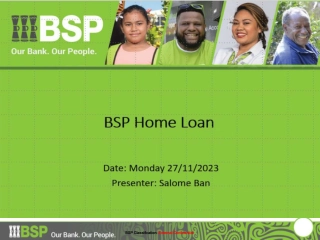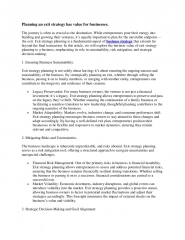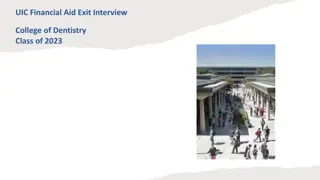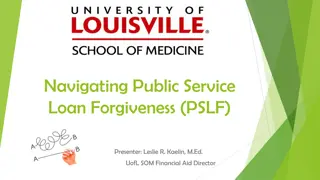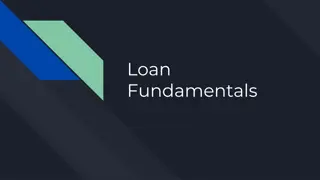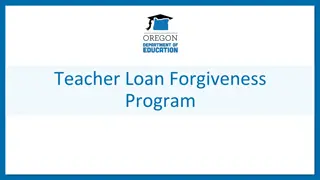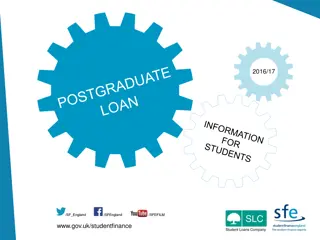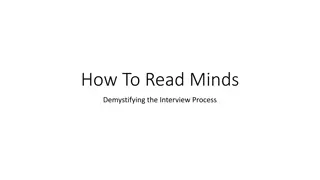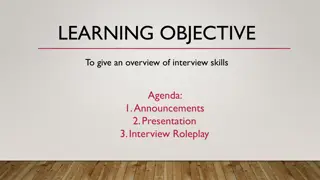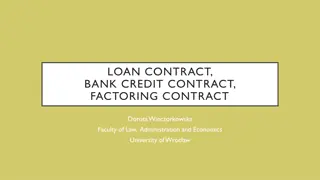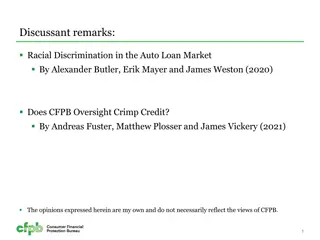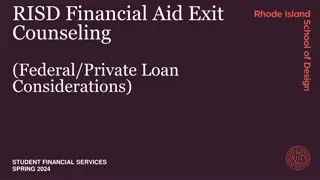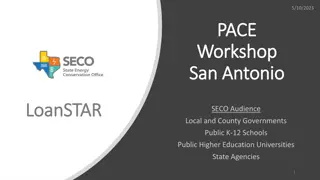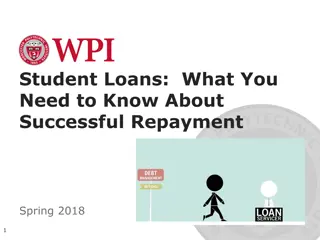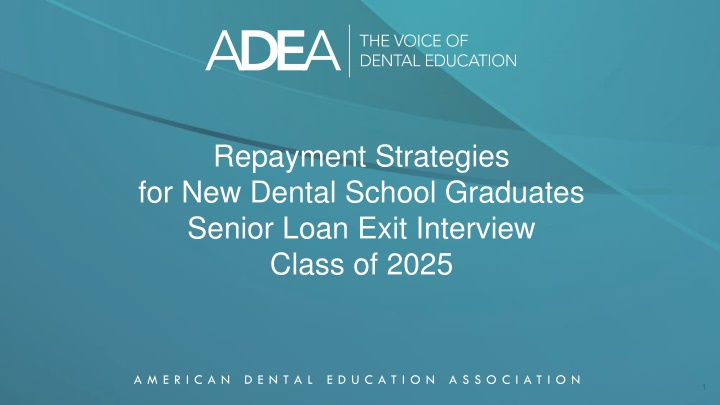
Dental School Loan Repayment Strategies for Graduates - Class of 2025
Learn about repayment strategies for new dental school graduates, including tips on managing federal and private student loans, understanding interest rates, and choosing the right repayment plan for your financial goals.
Download Presentation

Please find below an Image/Link to download the presentation.
The content on the website is provided AS IS for your information and personal use only. It may not be sold, licensed, or shared on other websites without obtaining consent from the author. If you encounter any issues during the download, it is possible that the publisher has removed the file from their server.
You are allowed to download the files provided on this website for personal or commercial use, subject to the condition that they are used lawfully. All files are the property of their respective owners.
The content on the website is provided AS IS for your information and personal use only. It may not be sold, licensed, or shared on other websites without obtaining consent from the author.
E N D
Presentation Transcript
Repayment Strategies for New Dental School Graduates Senior Loan Exit Interview Class of 2025 A M E R I C A N D E N T A L E D U C A T I O N A S S O C I A T I O N
Important Reminders Information as current as possible as of January 2025. Watch for updates from your loan servicer, Federal Student Aid, and your financial aid office. You can change strategies and repayment plans. Principal loan balance will not come down until you cover more than the total outstanding interest. No penalty for aggressive payments. Control what you can control in repayment by meeting deadlines, keeping contact information current, and keeping loan servicer in safe sender email list. Documentation is extremely important. Be careful where you get information about repayment. A M E R I C A N D E N T A L E D U C A T I O N A S S O C I A T I O N
Simple steps to choosing a repayment strategy 1. Be sure you can answer three questions about your student loan portfolio: What have you borrowed? Who is your loan servicer? When do your loans come due? 2. Identify and constantly review your repayment objectives. 3. Choose a repayment plan to help meet those objectives. A M E R I C A N D E N T A L E D U C A T I O N A S S O C I A T I O N
Step 1: Your student loan portfolio Federal direct loans at StudentAid.gov Direct unsubsidized and direct PLUS (Grad PLUS). Government is lender, repayment handled by third-party servicers. Usually due 6 months after graduation. Direct loans make up entire portfolio for many dental school graduates. Campus-based loans School is lender, different servicer than federal direct loans. Examples: Health Professions Student Loans (HPSL), Loans for Disadvantaged Students (LDS). Usually due 12 months after graduation (check disclosure statement for details). Private loans Private lenders are lenders, different servicer than federal direct loans. Usually have grace periods (check disclosure statement for details). A M E R I C A N D E N T A L E D U C A T I O N A S S O C I A T I O N
Student loan interest rates Federal direct loans Rates change on new loans disbursed on or after July 1 each year, then fixed for life of loan. You have different fixed rates on each federal loan you borrowed (see online account with loan servicer or StudentAid.gov for specific rates on your loans). Direct PLUS is 1% higher than direct unsubsidized disbursed during same year. Campus-based loans 5% fixed rate on HPSL and LDS (check disclosure statement). Private loans Rates vary, may be fixed or variable (check disclosure statement). Capitalization Accrued and unpaid interest added to principal balance. Interest no longer capitalizes on federal loans at repayment. Check disclosure statement for provisions on campus-based and private loans. A M E R I C A N D E N T A L E D U C A T I O N A S S O C I A T I O N
When loans come due Direct loans due 6 months after graduation or drop below half-time status. Direct unsubsidized have 6-month grace period. Grace period cannot be waived. Borrowers who apply too early for repayment will likely get denial notice. Direct PLUS have 6-month post-enrollment deferment period. Deferment period can be waived. Borrowers who apply before end of deferment period will likely be approved for repayment, but only on direct PLUS, since grace period cannot be waived on direct unsubsidized. Usually leads to tracking challenges since loans are entering repayment at different times. Loan servicers usually notify borrowers 30-60 days prior to loans coming due. A M E R I C A N D E N T A L E D U C A T I O N A S S O C I A T I O N
Due dates on predental federal loans Borrowers with predental loans with no gap year(s): Predental loans should come due same time as dental school loans. You must use entire 6-month grace period to lose it. Borrowers with predental loans with gap year(s): Predental loans should come due immediately after graduation, since 6-month grace period has been used on those. Grace periods are loan-specific, so using grace period on predental loans does not impact grace period and due date of dental school loans. Options to handle this situation include: o Request alignment forbearance of 6 months on predental loans to line up due date with dental school loans. o Continue paying on predental loans when they come due (they will be in same plan they were in prior to dental school) then request repayment plan for all loans when dental school loans are due. A M E R I C A N D E N T A L E D U C A T I O N A S S O C I A T I O N
Loan servicers and payment application Lenders use third parties to work with borrowers in repayment. Borrowers should have one servicer for all their federal direct loans. Loan servicers offer combined (single) billing, so you make one payment under the repayment plan you choose and the payment is applied proportionately against all your loans they service. Negates for many the need to consolidate, since you have the convenience of one payment through combined billing. Voluntary or additional payments may be applied to your highest rate loans. Campus-based and private loans have different servicers. A M E R I C A N D E N T A L E D U C A T I O N A S S O C I A T I O N
Step 2: Your repayment objectives Smartly aggressive Posting additional payments on highest rate loans (for example, direct PLUS). Cautious Minimum payments to help with cash flow. Public Service Loan Forgiveness Debt forgiven after 10 years of work in non-profit sector. Loan repayment assistant programs Financial support in exchange for employment or service commitment. Examples include National Health Service Corps and armed forces. Refinancing with private lender Lowering interest rate on portfolio with credit-based private loan. A M E R I C A N D E N T A L E D U C A T I O N A S S O C I A T I O N
Postponement options Contact your loan servicer if you need to postpone payments. Details at StudentAid.gov for federal direct loans. Two ways to postpone payments on federal loans: Deferment o Subsidized direct loans are interest free during deferment. Forbearance o Interest usually accrues on all direct loans during forbearance periods. Borrowers considered in good standing under either option. See disclosure statement for postponement options on campus- based and private loans. A M E R I C A N D E N T A L E D U C A T I O N A S S O C I A T I O N
Step 3: Choose repayment plan When loans come due, choose repayment plan where minimum required monthly payment is comfortable and affordable, then decide how to proceed. Overpay in whatever amount you can afford whenever you can, posting additional payment amount on highest rate loan, if your strategy is smartly aggressive. Make minimum payments if cash flow concerns or trying to qualify for Public Service Loan Forgiveness. Two categories of repayment plans on federal loans: 1.Time-driven 2.Income-driven A M E R I C A N D E N T A L E D U C A T I O N A S S O C I A T I O N
Time-driven repayment plans Monthly payment based on amount due at repayment (principal and any accrued and unpaid interest) spread out (amortized) over either 10 years or 25 years. Payment calculation has nothing to do with income, marital and tax filing status, or family size. Minimum payment always covers more than monthly interest. Debt retired at end of term, nothing to forgive. Common with campus-based and private loans. A M E R I C A N D E N T A L E D U C A T I O N A S S O C I A T I O N
Income-driven repayment (IDR) plans Designed for borrowers with significant gap between federal student loan debt and income who cannot afford payments under time-driven plans. Popular with dental residents in hospital-based advanced dental education programs who receive a stipend during training and who have high student loan debt-to-income ratio, but want to start repayment. Monthly payments change annually Once calculated, payments good for 12 months. Borrowers using income-driven plans are notified to update income prior to end of 12- month period. A M E R I C A N D E N T A L E D U C A T I O N A S S O C I A T I O N
Payment calculation for IDRs Monthly payments based on federal formula that looks at income, family size, and poverty level for borrower s state of residence. In general, income used is from most recently filed return, so payments lag a year. Current income used when no return filed for prior two years or current income has significantly decreased from prior year. Spousal income counted under IDRs when filing jointly. Spousal federal student loan debt factored into payment calculation when spousal income counted in payment calculation. A M E R I C A N D E N T A L E D U C A T I O N A S S O C I A T I O N
How income plans work Unlike time-driven plans, there is no date certain when loans will be paid in full, since payments change each year. One of three things will happen when using an IDR: 1. Debt forgiven after 10 years of qualifying payments with Public Service Loan Forgiveness (PSLF). Balance forgiven not subject to federal tax. 2. Debt paid in full by borrower prior to end of repayment term (20 or 25 years, depending on which income plan used), or borrower refinances debt with private lender. 3. Remaining debt balance forgiven at end of term if borrower did not use PSLF and was unable to pay balance in full by end of term. Balance forgiven is subject to federal tax the year forgiven. A M E R I C A N D E N T A L E D U C A T I O N A S S O C I A T I O N
Important notes on income-driven plans Information subject to change Watch for correspondence from loan servicer and Federal Student Aid (StudentAid.gov) Current available plans: Income Contingent Repayment (ICR 1994) o Much older plan, rarely used, usually has significantly higher payments than other IDRs. o Not shown on IDR comparison chart. Pay As You Earn (PAYE 2012) Income Based Repayment (IBR 2009 and 2014) SAVE plan currently on hold due to injunction. See StudentAid.gov/SAVEaction for updates on SAVE and other income plans. Not shown on IDR comparison chart due to current injunction. A M E R I C A N D E N T A L E D U C A T I O N A S S O C I A T I O N
IDR comparison chart Old IBR (2009) PAYE (2012) New IBR (2014)* Payment calculation 15% of DI**; payment capped at Standard 10-year payment 10% of DI**; payment capped at Standard 10-year payment 10% of DI**; payment capped at Standard 10-year payment amount Repayment term 25 years 20 years 20 years Spousal income Included unless filing separately Included unless filing separately Included unless filing separately Income requirement Yes, borrower must show PFH*** Yes, borrower must show PFH*** Yes, borrower must show PFH*** Interest subsidy on unsub loans No No No PSLF eligible Yes Yes Yes Interest capitalization Yes, when no more PFH or borrower moves to another income plan No Yes, when no more PFH or borrower moves to another income plan * New IBR is for borrowers whose first direct loan was disbursed on or after July 1, 2014 ** Discretionary income (how much Adjusted Gross Income exceeds 150% of poverty line for borrower s state of residence) *** Partial Financial Hardship (when calculated payment exceeds standard 10-year payment amount calculated at time of IDR application) A M E R I C A N D E N T A L E D U C A T I O N A S S O C I A T I O N
Repayment assumptions $300,000 federal direct loans (original amount borrowed). $162,000 direct unsubsidized, remainder direct PLUS. Equal disbursements per two semesters each year over four years. Applicable interest rates by year for Class of 2025 graduate; CARES Act (0% interest) applied from March 2020 through September 2023 to calculations. Borrower enters repayment 6 months after May graduation. No prepayments, loans held to term. Single, family size of one for payment calculation with New IBR. $200,000 starting salary. AAMC/ADEA Dental Loan Organizer and Calculator used for all calculations; available at adea.org/DLOC. A M E R I C A N D E N T A L E D U C A T I O N A S S O C I A T I O N
Repayment estimates at $300,000 debt Plan Years Monthly Payment Total PSLF Paid PSLF Forgiven NA NA $204,277* $362,423** Term Repayment $466,033 $704,120 $475,694 Forgiveness NA NA $318,477*** Standard Extended New IBR 10 25 20 $3,908 $2,372 $1,471 to $2,597 over 20 years * PSLF Paid represents what borrower pays out of pocket over 10 years ** PSLF Forgiven represents remaining balance after 10 years of qualifying payments that is forgiven *** Term Forgiveness represents remaining balance forgiven after 20 years of payments A M E R I C A N D E N T A L E D U C A T I O N A S S O C I A T I O N
Advanced dental education and repayment Hospital-based residency You are an employee of the hospital receiving a stipend (income). Start active repayment, possibly with income plan if needed, or Postpone payments with mandatory internship residency forbearance. Academic-based residency You are still considered enrolled in school. Should have in-school status or in-school deferment on federal loans. May need to borrow more, depending on cost and resources. A M E R I C A N D E N T A L E D U C A T I O N A S S O C I A T I O N
Public Service Loan Forgiveness (PSLF) Designed to encourage borrowers to enter and remain in non- profit sector for at least 10 years with promise to forgive debt at that time. PSLF not degree-specific, any borrower can qualify if they meet eligibility requirements, including dental school graduates. May be of interest to borrowers pursuing research, academic dentistry, county or state work, or work in federal government. See ADEA Resources for Students for PSLF reference guide. A M E R I C A N D E N T A L E D U C A T I O N A S S O C I A T I O N
PSLF eligibility requirements Three things must happen at the same time in order to qualify for PSLF. Borrower must: 1. Make 10 year s worth of qualifying payments with an eligible plan*, 2. On eligible loans (only federal direct loans are eligible for PSLF), 3. While working full time for an eligible employer**. * Payments do not have to be consecutive nor from the same eligible repayment plan. ** Employment does not have to be consecutive nor from the same eligible employer. A M E R I C A N D E N T A L E D U C A T I O N A S S O C I A T I O N
Federal consolidation Paying off multiple federal loans with one new federal loan. Many recent graduates do not need to consolidate, since most have one loan servicer for all their direct loans and their interest rates are fixed. You already have convenience of one payment through combined billing. Interest rate on federal consolidation is a weighted average rounded up one-eighth of a percent (you do not get a lower rate with federal consolidation). Online application and promissory note available at StudentAid.gov/consolidation. See ADEA Financial Resources for Students for more information, including advantages and disadvantages of federal consolidation. A M E R I C A N D E N T A L E D U C A T I O N A S S O C I A T I O N
Refinancing with private lender Paying off multiple federal, campus-based, and/or private loans with one new credit-based private loan. Main incentive to refinance is to secure lower interest rate on entire student loan portfolio, and thus savings in repayment when compared to other loans over the same repayment term. Based on credit, but lenders may also consider degree program, school attended, employment history, and debt-to-income ratio when determining eligibility and interest rate. See ADEA Financial Resources for Students for more information, including advantages and disadvantages of refinancing. A M E R I C A N D E N T A L E D U C A T I O N A S S O C I A T I O N
Resources adea.org See Financial Resources for Students AAMC/ADEA Dental Loan Organizer and Calculator at adea.org/DLOC StudentAid.gov Updates on repayment plans, including SAVE Entire federal borrowing history available here on your dashboard Your loan servicer Your financial aid office irs.gov/publications/p970 Information on the student loan interest deduction A M E R I C A N D E N T A L E D U C A T I O N A S S O C I A T I O N
Summary and takeaways Dental school graduates have great record for repayment. Constantly review your repayment objectives. You can change strategies and repayment plans if needed. There is never a penalty for aggressive payment. Keep up to date on changes, but be careful where you get information on repayment. Check and read your mail, and be certain loan servicer is in your email safe sender list. Use AAMC/ADEA Dental Loan Organizer and Calculator to help craft together your repayment strategy. A M E R I C A N D E N T A L E D U C A T I O N A S S O C I A T I O N
Congratulations and best wishes to the Class of 2025! A M E R I C A N D E N T A L E D U C A T I O N A S S O C I A T I O N

